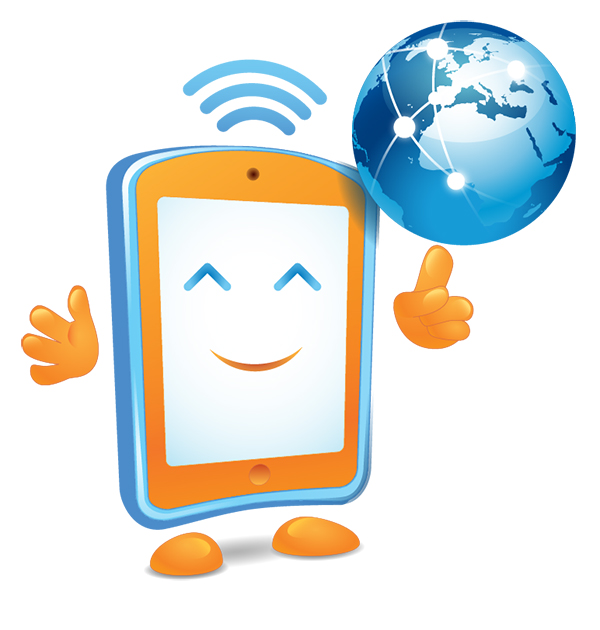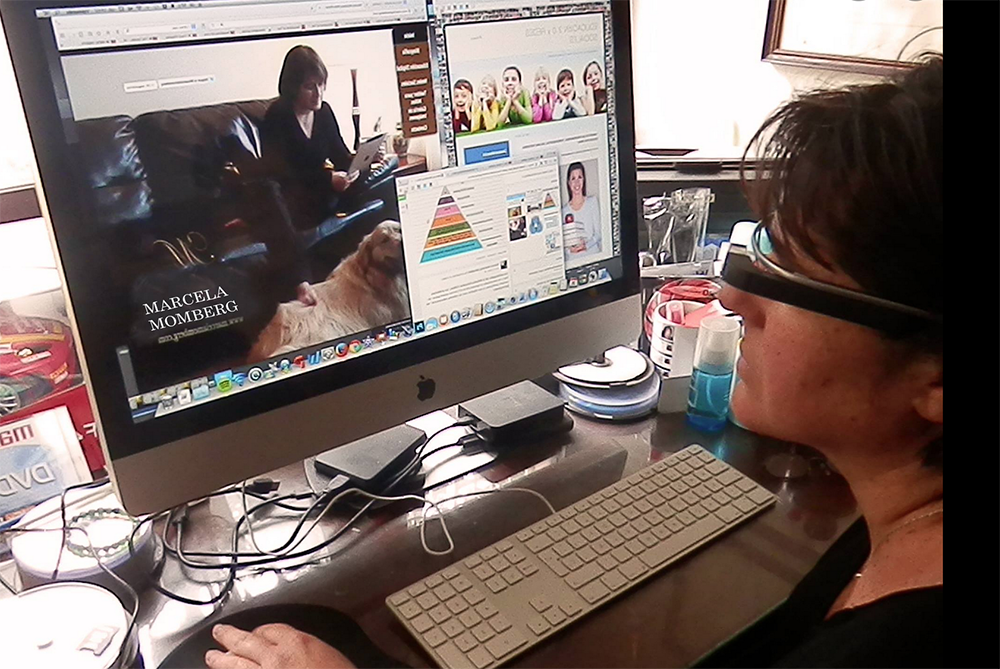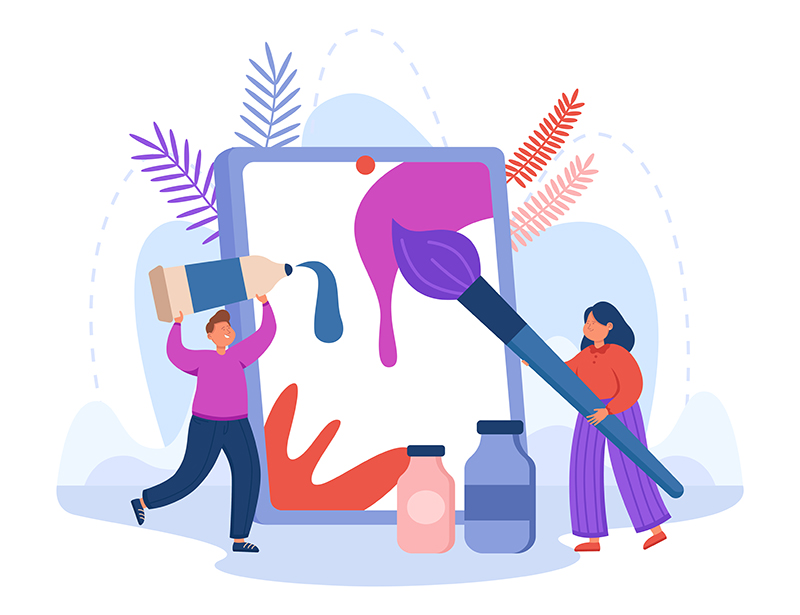How do girls and boys use the internet?
The Internet was born as a system for scientists around the world to share information. On 23 August 1991, the World Wide Web was launched to the world. In 1991, its users accounted for less than 1% of the world’s population. Today, 32 years later, there are 5.16 billion people who use it, that is, 64.4% of the world’s population. These are data from the report Digital 2023 conducted by We Are Social and Hootsuite.
According to UNICEF, children and adolescents account for approximately one in three users. Increasing empirical evidence shows that children are accessing the Internet at younger and younger ages. According to the same organisation, in some countries, children under the age of 15 are as likely to use the Internet as adults over the age of 25. Smartphones are fuelling a “bedroom culture”, and, for many children, on-line access is becoming more personal, more private and less supervised.
Now that we know how many children use it, let’s see how they do so. The first fact to highlight is that it is at home, preferably via mobile devices, especially smartphones (they are more flexible and private) and for communicating, learning new things and playing online games. These are data from the project Global Kids Online project, an initiative of UNICEF, the London School of Economics and the European Union which gathers evidence on children’s digital rights, opportunities and risks in 33 countries around the world. Zooming in on this fact, we can see how, for example, in the Philippines, children love Facebook and YouTube, and their main online activities are learning something new, social networking, watching video clips, using the internet for homework and playing online games. In South Africa, up to two in five adolescents search for health information on the Internet at least once a week. In Brazil, three out of ten children seek information on well-being and mental health. Apart from the above, multimedia, educational and communication activities were the most common online activities among Brazilian children and young people.
Children and adolescents account for approximately one in three users.
Are our children truly digital natives?
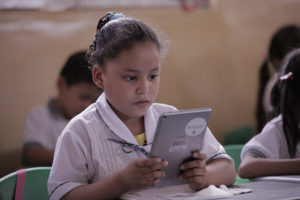
Absolutely not. No one is born with knowledge, and in this, digital management is no exception. Knowing how technology works is not the same as knowing how to use technology. Some studies have shown that while young children (digital natives) are fluent with new technologies, they lack the technical, critical and social skills needed to deal with the dangers they present.
New technologies and the digital environment offer children and young people great opportunities. They can, for example, access a vast amount of information that no previous generation has had access to; they can learn in many different ways, mediated by these technologies; and they can also create and distribute their own content to the world. However, these opportunities, which are also key to the development of their full capacities as human beings, must always go hand in hand with responsibility. So, just as in the analogue world we protect our children from a variety of potentially dangerous situations and teach them how to protect themselves from them, in the digital world we cannot forget about that protection.
In order to protect themselves, children need to acquire digital skills that, as the expert Marcela Momberg told us, are those that a citizen must have in this hyper-connected era to be able to exist in the digital space. This means skills to sift through information, to communicate, to take care of oneself, to create in a completely different space, to democratise information. It is a sum of skills that allow us to know what duties and rights we have in a space that is in continuous transformation. These skills must be generated from the classroom, with the accompaniment of parents and the support of institutions.
What does it mean to make critical, safe and responsible use of new technologies?
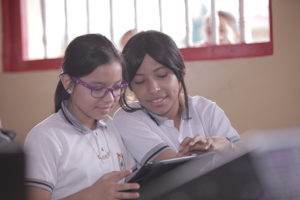
The consumption of information has always been accompanied by the need to make use of critical thinking. Who tells us what? What are their credentials? Why should I trust this information? Nowadays, with the huge volume of information we handle, thanks to the emergence of new technologies, the need to make critical use of it has increased a thousandfold. Today, it is more necessary than ever to learn how to assess the credibility of the information we consume. As content producers, we must also learn to produce relevant and appropriate content, using the right sources.
Moreover, as we have already said, in the digital world, as in the analogue world, it is very important to know how to protect ourselves against possible risks. Hence, to protect ourselves against possible risks: protecting our data and personal information and avoiding fraud, unsafe pages and the not receiving malicious information are some of the actions that we should internalise from a young age in order to make safe use of new technologies.
Finally, responsibility and respect for oneself and for others, which we must practice in our daily lives in the analogue world, are values that must be transferred to the digital world when we interact in the network of networks.
Digital skills must be generated in the classroom, with the support of parents and institutions.
What about teachers? Are they ready to teach digital citizenship?
The incorporation of technology in education entails the challenge of training a new professional, a new teacher who is not only capable of integrating new technologies into their teaching skill set, but who also knows how to guide their students in the critical, safe and responsible use of new technologies. The global and technological society of the 21st century needs teachers with specific competencies to put technology at the service of the pedagogical model and introduce it in the classroom. What should new teachers be like in an increasingly digital educational environment? What do they need to know in order to be able to teach their students? We’ll explain it to you in this post. What are these competencies and how to develop them? Here we show you some programmes and, in this interview, a very experienced teacher shares her recipe for supporting teachers, especially those in vulnerable environments.
The problem is not the new technologies themselves but the way in which the 21st century citizen is being educated and is not being taught to use these new technologies in an appropriate way.
What can we do to promote safe, critical and responsible use of the internet?
We have already seen that today one in three internet users are children (1.72 billion children and young people) and this trend will only increase in the future. We have also seen how the problem is not the new technologies themselves but the way in which the 21st century citizen is being educated and is not being taught to use these new technologies in an appropriate way. And what priority actions can be promoted by public and private, national and supranational bodies to protect children from the dangers of the digital world while helping them to benefit from the multiple advantages of being online?
In its report 2017 State of the World’s Children: Children in a Digital World, UNICEF outlines a series of points to guide policy-making and practical action in the digital sphere in relation to children. We summarise them below:
- Provide all children with affordable access to high quality online resources. The quality of content is one of the most decisive factors when it comes to the safe, critical and responsible use of new technologies. Access to quality content facilitates their access to information and opportunities for employment and social participation. This is why all children must be guaranteed access to high quality online resources. How? By reducing the cost of an Internet connection; investing in public access points and promoting the creation of content relevant to children and in their own languages.
- Protect children from online harm by supporting the implementation of national and international child protection laws and activities and promoting information and awareness-raising activities at all levels.
- Protect children’s privacy and identity online by implementing safeguards to protect children’s personal information in line with ethical and international standards; prohibiting the exploitation of children’s personal data for commercial purposes; and setting maximum privacy settings by default on digital tools and platforms used by children.
- Deliver digital literacy to keep children informed, engaged and safe online by teaching digital literacy in schools; establishing opportunities to learn ICT skills in non-formal education and supporting teacher training.
- Harness the power of the private sector to promote ethical standards and practices that protect and benefit children online. The private sector has played a key role in the impact of the digital revolution. As providers of internet access, as producers and providers of content and other digital goods, and as providers of online goods and services, digital businesses are increasingly integrated into children’s lives. As gatekeepers who control the flow of information across networks, they also have access to vast amounts of children’s information and data. These functions provide companies with considerable power and influence, and thus increase their responsibilities.
- Put children at the heart of digital policy. Despite estimates that children represent one third of internet users, current national and international internet policies do not sufficiently take into account the particular needs and rights of children. Policies related to cybersecurity, artificial intelligence and machine learning, net neutrality and internet openness focus first and foremost on the adult user. This is why the views of children and young people should be included in the development of digital policies that affect their lives and why specific children’s issues should be integrated into national policies and strategies.
The need to educate critical and responsible digital citizens is becoming increasingly urgent. Schools and teachers are in a unique position to promote the safe, critical and responsible use of new technologies. But in order to perform their teaching work successfully, they need a clear framework to be provided by institutional policies and public administrations. We are facing a historic opportunity that governments, teachers, private institutions and civil society organisations must seize in order to develop content, educational resources and working methodologies in the classroom that will allow the next generations to live in the digital world in the best possible way.




